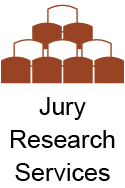From Voir Dire to Verdict—Online Courtroom Project’s Demonstration Online Jury Trial Results are in!
July 16, 2020 Jeffrey T. Frederick, Ph.D. From Voir Dire to Verdict—Online Courtroom Project’s Demonstration Online Jury Trial Results are in! The Online Courtroom Project has just finished a comprehensive report on their two day online demonstration trial conducted on June 26th and 27th. With many courts struggling with significant case backlogs and balancing the health risks of holding in-person trials while continuing to provide access to our justice system, this report details how online jury trials can occur online. The report details the process of how we went about designing and testing an online trial, the obstacles we

